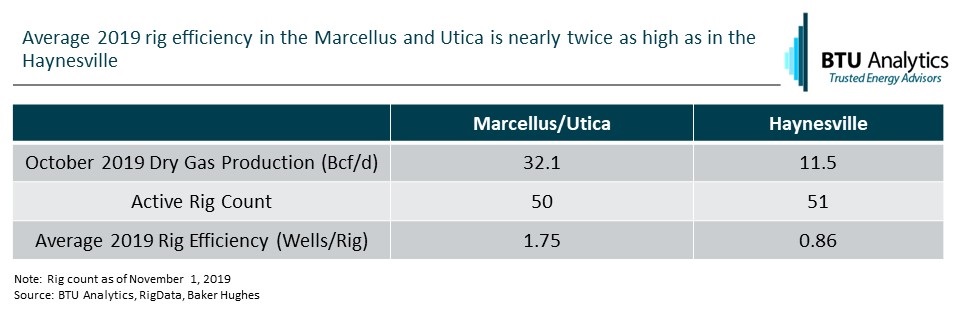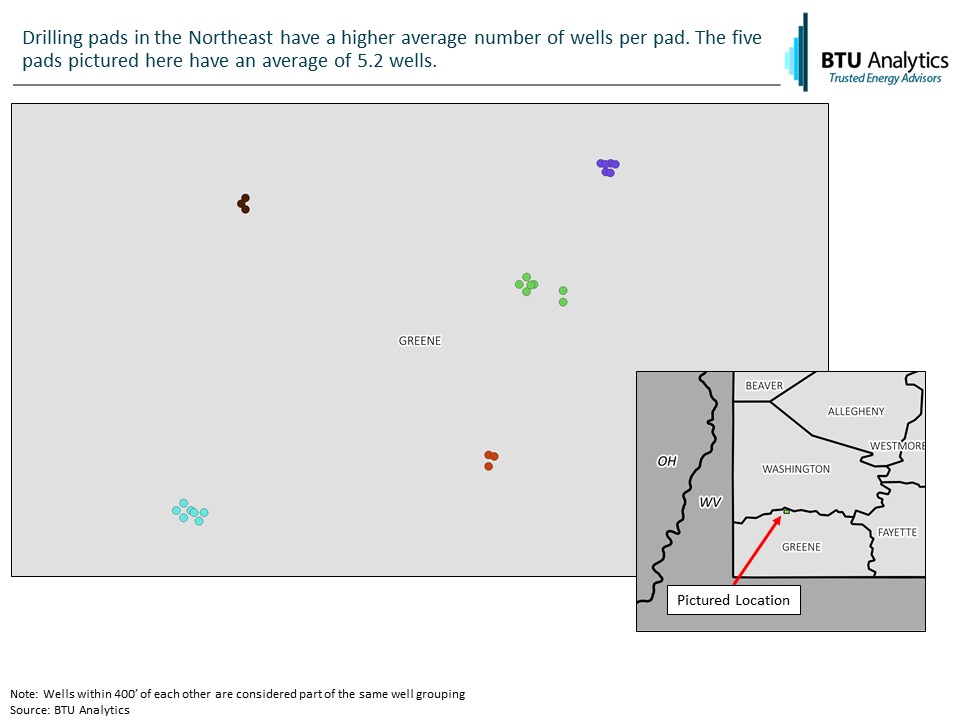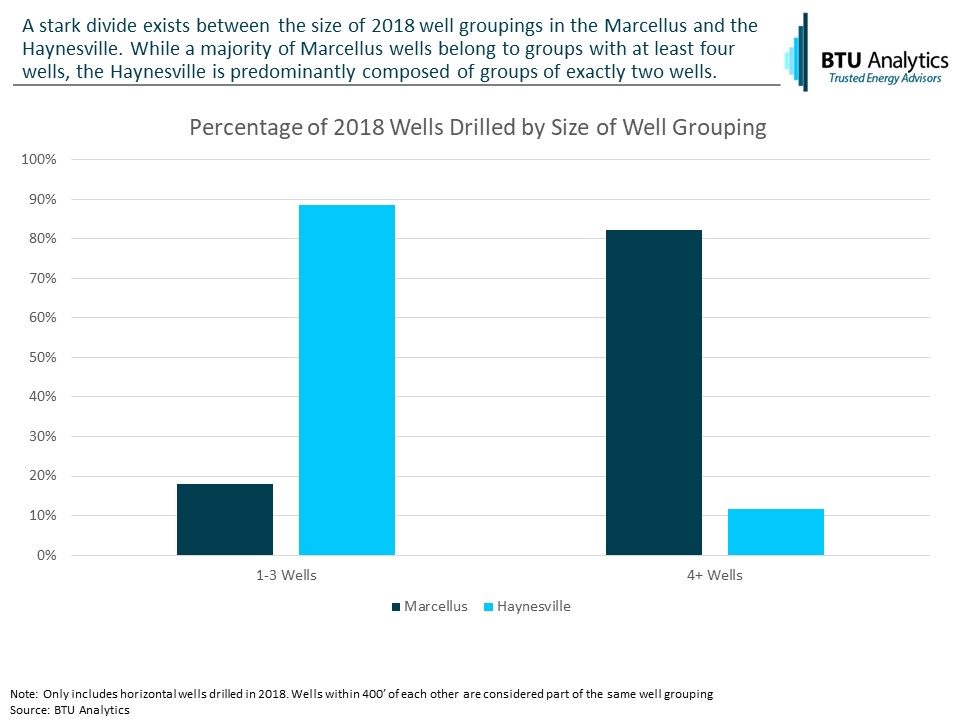Dry gas production in the US is dominated by two major gas-specific plays: the Marcellus/Utica in the Northeast and the Haynesville Shale in Northwest Louisiana. The Haynesville has long been billed as the next big thing in gas, and the play has seen increased production albeit not to the same level as its counterpart in the Northeast. In October 2019, Marcellus/Utica dry gas production averaged over 32.1 Bcf/d while Haynesville production was 64% lower at 11.5 Bcf/d. With rig counts in both basins at nearly identical levels, today’s Energy Market Commentary will look at how smaller pad sizes are driving lower rig efficiencies in the Haynesville.
As of the most recent Baker Hughes report, rig counts in the Haynesville and the Northeast are extremely similar with active rigs in the Haynesville slightly outnumbering Marcellus/Utica rigs 51 to 50. However, despite the similar rig levels, drilling efficiency between the two regions varies significantly. Average Marcellus/Utica monthly rig efficiency in 2019 is approximately 1.75 wells per rig. This is significantly higher than the 0.86 monthly wells per rig in the Haynesville. These values are summarized in the table below.

Naturally, this raises the question of why such a large discrepancy in rig efficiency exists between the two plays. While there are a variety of factors that impact drilling efficiencies, one glaring difference between the Marcellus and the Haynesville is the size of drilling pads. This can be illustrated by plotting well locations as shown in the maps below. Map 1 shows five pads in the Marcellus averaging 5.2 wells per pad. In Map 2, a similar collection of five groups in the Haynesville average just 2 wells per group.


This difference is further shown by looking at the size of well groupings for drilling activity in 2018. In the Marcellus, approximately 82% of identified well groupings brought online in 2018 contained at least four wells. Conversely, in the Haynesville, just 11% of 2018 well groups had four or more wells. Rather, 67% of Haynesville wells belong to well groups that contain exactly two wells compared to only 4% in the Marcellus. The chart below illustrates the divide in the size of well groupings between the two basins.

The Haynesville is well positioned geographically to capitalize on growing demand for natural gas along the US Gulf Coast. However, production growth could potentially be limited by the lower rig efficiencies that stem from drilling smaller pads. Request a copy of BTU Analytics’ Upstream Outlook for an in depth look at production and drilling forecasts across the US and Canada. Also, check out our most recent E&P Positioning Report for information on inventory and breakevens across the major US oil and gas basins.









